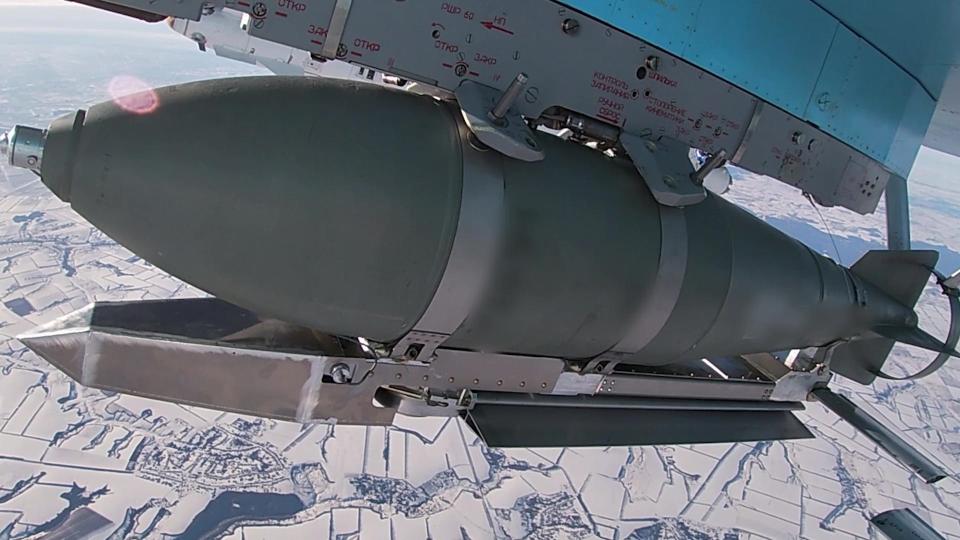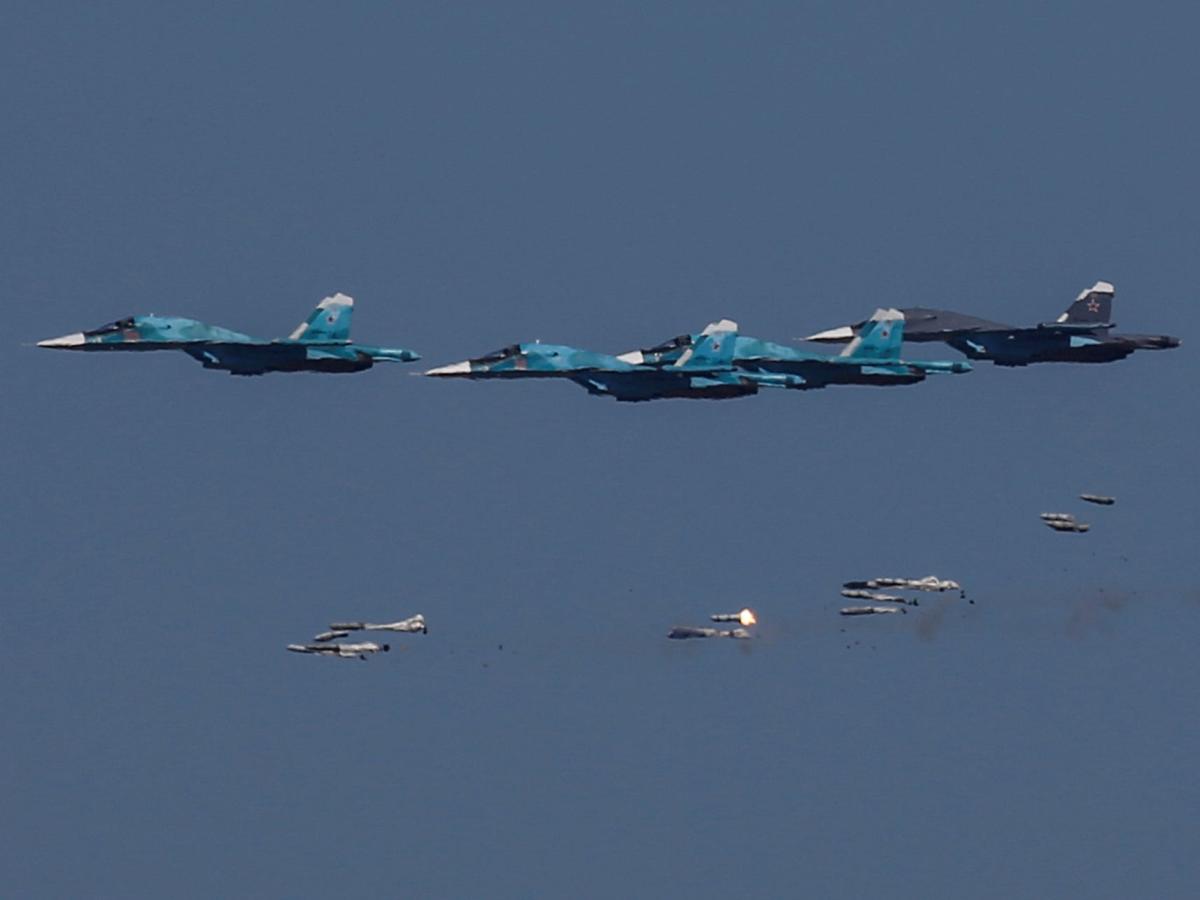-
Russia has increasingly relied on glide-bomb strikes to hammer Ukrainian front-line positions and cities.
-
A recent Ukrainian drone attack on a Russian airbase suggest Kyiv is going after the bombs.
-
Britain’s defense ministry said multiple glide-bomb kits appeared to have been destroyed in the Saturday attack.
Ukraine’s massive weekend drone attack on a Russian airbase deep behind enemy lines suggests Kyiv may be trying to curb the threat of Moscow’s devastating glide bombs, according to new Western intelligence.
Russia has increasingly relied on glide-bomb strikes to hammer Ukrainian positions in recent months. These munitions are particularly difficult to intercept because they have short flight times, small radar signatures, and non-ballistic trajectories.
Glide bombs have flight control surfaces and are known as standoff weapons, meaning that Russian warplanes can release them at a distance beyond the range of Ukraine’s air-defense systems. Shooting down the planes before they release the weapon or striking them on the ground are really the only ways to defeat the threat. Destroying the bombs before they get in the air is an option as well.
Ukrainian forces on Saturday reportedly fired dozens of attack drones at the Kushchyovskaya airfield and two oil refineries in southwest Russia, quite a distance from the front lines. It marked the latest of Kyiv’s long-range attacks, which have targeted Moscow’s military and energy facilities.
The Kushchyovskaya base is home to Russia’s Su-34 and Su-35 fighter jets, which “are used daily in strike missions against Ukrainian front-line positions, including the heavy use of glide bombs,” Britain’s defense ministry wrote in a Tuesday intelligence update. The ministry said footage from a storage location at the airfield indicated that multiple glide-bomb kits were destroyed in Saturday’s attack.
It was not immediately clear whether any of the aircraft were damaged or destroyed in the attack. Satellite imagery of the airfield shared by Brady Africk, an open-source intelligence analyst at the American Enterprise Institute think tank, showed some damage to the facility.
Russian fighters from Kushchyovskaya and other similar bases “typically conduct 100 to 150 sorties per day, a significant percentage of those launching munitions all along the front lines as Russia attempts to force breakthroughs through sheer firepower,” Britain’s defense ministry said.
“Ukraine’s ability to disrupt Russian tactical air, particularly glide bomb usage, is key the the wider defense of the front lines,” the UK continued. “This successful strike is likely to force further Russian dispersals of fighters as well as reallocation of air-defense assets to plug gaps.”
Glide bombs have been a headache for Kyiv’s forces for much of the war, but Russia has significantly ramped up its attacks using these weapons over the past few months. These weapons were a particular problem around the eastern Ukrainian city of Avdiivka earlier this year, which Moscow captured after a bloody monthslong campaign.

Unlike more traditional gravity bombs, which are dropped above a target, glide bombs can be launched from miles behind the front lines, limiting an aircraft’s exposure to enemy air defenses. Russia’s defense ministry said in March that it began increasing production of several types of munitions — including 6,600-pound ones — that can be modified and turned into glide bombs.
Saturday’s strike on the Kushchyovskaya airbase is not the first time Ukraine has gone after Russian airbases hosting fighter-bombers that can drop glide bombs. In early April, Ukraine staged a huge drone attack on the Morozovsk airbase in Rostov, hundreds of miles inside Russia.
While the extent of the damage was ultimately unclear, the attack appeared to underscore Ukraine’s desire to stomp out the glide bomb threat before the aircraft could take flight. Experts have warned that Russian glide bombs pose a tremendous threat to Ukrainian forces.
Russian forces have “significantly changed tactical aviation operations in Ukraine with their mass use of glide bombs, allowing fixed-wing aircraft to more safely conduct strikes from further in the rear,” analysts at the Institute for the Study of War think tank said on Saturday.
“These glide bomb strikes will continue to play a critically important role in supporting Russian ground operations this summer despite the likely improved air-defense capabilities that Ukrainian forces will be able to leverage against Russian aircraft as additional Western air defense materiel arrives,” the analysts wrote in their assessment.
Read the original article on Business Insider
